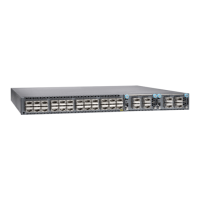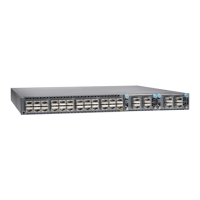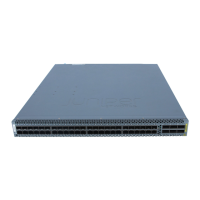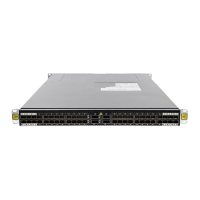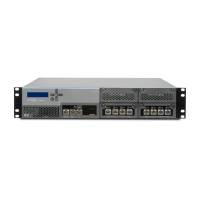Cable Specifications for Console and Management Connections for the QFX Series
Table 29 on page 64 lists the specifications for the cables that connect the QFX Series
to a management device.
NOTE: The QFX Series can be configured with SFP management ports that
support 1000BASE-SX transceivers. See The Hardware Compatibility Tool for
more on the fiber-optic cables required for use with these transceivers.
Table 29: Cable Specifications for Console and Management Connections for the QFX Series
Device
ReceptacleMaximum LengthCable SuppliedCable Specification
Porton QFXSeries
Device
RJ-457 feet (2.13 meters)One 7-foot (2.13-meter) long
RJ-45 patch cable and RJ-45 to
DB-9 adapter
RS-232(EIA-232) serial cableConsole port
RJ-45328 feet
(100 meters)
One 7-foot (2.13-meter) long
RJ-45 patch cable
Category 5 cable or
equivalent suitable for
1000BASE-T operation
Management port
Related
Documentation
Console Port Connector Pinouts for the QFX Series•
• Management Port Connector Pinouts for the QFX Series
• Connecting a QFX Series Device to a Management Console
• Connecting a QFX5110 to a Network for Out-of-Band Management
Understanding QFX Series Fiber-Optic Cable Signal Loss, Attenuation, and Dispersion
To determine the power budget and power margin needed for fiber-optic connections,
you need to understand how signal loss, attenuation, and dispersion affect transmission.
The QFX Series uses various types of network cables, including multimode and
single-mode fiber-optic cables.
•
Signal Loss in Multimode and Single-Mode Fiber-Optic Cables on page 64
•
Attenuation and Dispersion in Fiber-Optic Cable on page 65
Signal Loss in Multimode and Single-Mode Fiber-Optic Cables
Multimode fiber is large enough in diameter to allow rays of light to reflect internally
(bounce off the walls of the fiber). Interfaces with multimode optics typically use LEDs
as light sources. However, LEDs are not coherent light sources. They spray varying
wavelengths of light into the multimode fiber, which reflect the light at different angles.
Light rays travel in jagged lines through a multimode fiber, causing signal dispersion.
When light traveling in the fiber core radiates into the fiber cladding (layers of lower
refractive index material in close contact with a core material of higher refractive index),
Copyright © 2017, Juniper Networks, Inc.64
QFX5110 Switch Hardware Guide
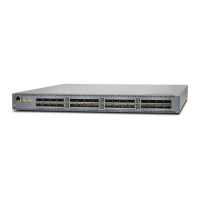
